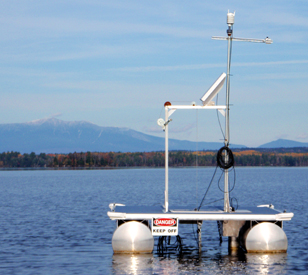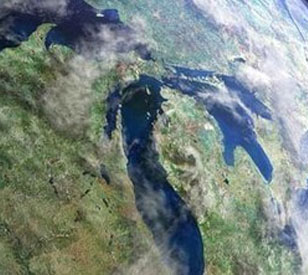Weather Stations

Automatic weather stations (AWS) can provide valuable data on current conditions and for forecasting purposes in agricultural, research and many other applications. Such systems typically incorporate various sensors, data logger with wireless transmission capabilities and solar panel for continuous operation. Temperature, wind and rain are some of the most commonly measured parameters, but many others may also be integrated.
Weather and Atmospheric Measurements

Typical Weather Station
Effective weather monitoring depends on reliable equipment that can withstand severe conditions and deliver quality measurements.
NexSens weather station systems can measure any combination of weather parameters including air temperature, relative humidity, atmospheric pressure, wind speed and direction, precipitation in the form of both snow and rain, solar radiation, and more. Both multiparameter weather stations such as the Vaisala WXT536 and Lufft WS-series and individual sensors including anemometers, barometers, rain gauges, pyranometers and PAR sensors can be integrated.
Sensors are connected to a mast-mounted NexSens X3 data logger, which transmits data wirelessly in near real-time via radio, cellular or satellite communications to the WQData LIVE web datacenter. WQData LIVE provides a suite of data management tools for viewing, exporting, generating reports and sending email and SMS text message alarms when measurements exceed defined conditions. A public portal option allows for sharing of data with the general public.
Weather stations may also be combined with other types of measurements including soil moisture and water quality. The X3 platform has multiple sensor ports, waterproof connectors and automatic sensor detection for simple integration of complex measurement systems. Low power consumption combined with SP-series solar power packs allow for continuous operation with minimal maintenance in most applications.
Contact a NexSens Applications Engineer today to discuss your weather station application.

Case Studies
Monitoring Platform Protects Native Culture
The Penobscot River is at the heart of Penobscot Indian culture. For hundreds of years, the tribe has looked on it as a source for food and medicine, as well as a means of transportation. But in recent years, algal blooms have gotten worse in the river, believed to be caused by phosphorus discharges from a paper processing plant. Not long after the plant was fined and ceased operations, the Penobscot Indian Nation secured funding to launch a water quality monitoring platform on the river. The platform serves as a guardian both to the Penobscot River and to the culture that still thrives around it today.
Read MoreMulti-Parameter Weather Monitoring
Located on the shores of Kentucky Lake in southwestern Kentucky, the Hancock Biological Station provides scientists with a base of operation for field research and offers students field-oriented classes, individualized instruction, independent research, and close interactions with researchers and faculty. HBS is also the field facility for the Center for Reservoir Research and for the Ecological Consortium of Mid-America. The region is diverse in aquatic and terrestrial habitats. Southwestern Kentucky has one of the largest densities of major rivers and reservoirs of any region in the world. Kentucky and Barkley Lakes, ponds, and streams are in close proximity.
Read More






